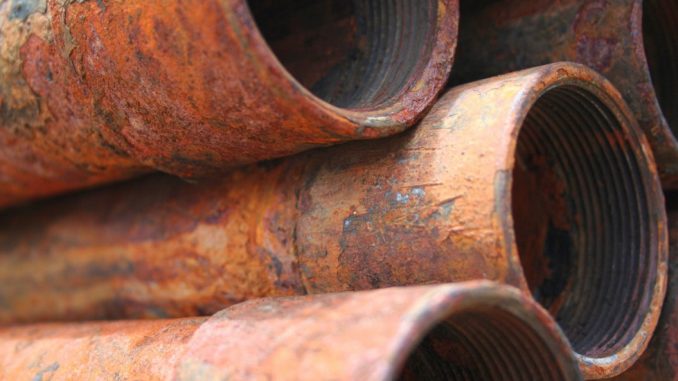
Corrosion is dangerous and it’s everywhere. This naturally occurring reaction between metal and metal or environment and metal wrecks buildings and the economy – which is why so many people want to know how to prevent corrosion.
It doesn’t matter who you are. You might have a rusty old boiler in the back garden that needs protecting. You could be working on a multimillion pound oil rig somewhere out at sea. Wherever you are, whatever the structure – corrosion will come for you.
That’s why the global cost of corrosion has been put at $2.5 trillion every year. That accounts to 3.4 percent of global GDP. The cost of natural disasters meanwhile came in at a paltry-in-comparison $225 billion.
What can be done to prevent corrosion causing so much damage to our economy, our buildings and our lives? Here are five steps which you can take to help prevent corrosion.
Control the environment
Depending on the situation that the structure requiring protection is in, corrosion can be prevented by making attempts to control the environment. Obviously, if you’ve got a pipeline buried on a seabed then there isn’t much that can be done to control the saltwater environment which that system is in.
There will be pipes and structures however where efforts can be made to reduce exposure to rainwater by covering systems or re-routing them. The opportunity might even exist to control the levels of oxygen, sulphur, chlorine and other reactant gasses in the surrounding environment.
Watch what goes through your pipes
On the theme of control, corrosion in pipes can be prevented by monitoring what is passing through. Making attempts to keep the pH level of your water between 6.5 and 8.5 – essentially neutral – can help prevent corrosion occurring.
Water and oxygen are a bad combination so the oxygen level of water should also be monitored to ensure it isn’t too high. Temperature plays its part, with hotter water being more corrosive.
Cleaning pipes out regularly with suitable chemicals will help to prevent microbiologically induced corrosion, which is where corrosive bacteria eats away at metalwork.
Apply a layer of protective paint or a specialist coating to the metalwork
One of the easiest and most cost effective ways of preventing pipes and other metal structures is by applying a layer of protective paint.
Paint will act as a barrier between the metal and other elements that could cause a chemical reaction, be that via galvanic corrosion when another metal is present or through environmental corrosion with rainwater, oxygen or saltwater.
For higher levels of protection, specialist brushable coatings such as Liquid Metal have been produced. These metal-filled epoxies increase the chemical resistance of pipes and metalwork and help to stop corrosion.
Add a layer of sacrificial metal
The concept of a sacrificial metal is easy to understand as it does exactly what it says on the tin. You add an additional layer of a more reactive metal to the surface that you are trying to protect which will then sacrifice itself by corroding, leaving the integral structure intact.
Zinc is most commonly used as a sacrificial metal to help stop corrosion. When a layer of zinc is applied on top of steel or iron, then the zinc will corrode and oxidise which prevents the corrosion of the steel.
This method is commonly used to protect major pipelines carrying water and oil, ships and offshore oil platforms.
Use corrosion inhibitors
Corrosion inhibitors help to suppress the chemical reactions that lead to corrosion occurring in the first place. Rather than allowing the pipework or metal surface to react with its environment or another metal structure, the inhibitors instead take their place in the reaction which helps to prevent corrosion.
SylWrap Corrosion Protection & Repair Wrap is one example of where corrosion inhibitors can be found. To stop corrosion happening, you simply apply the wrap around the pipes or structure requiring protection.
In testing, a metal pile wrapped in SylWrap CR was subjected to 1,000 hours of saltwater exposure, after which it remained corrosion free once the wrap was removed.
Corrosion costs the global economy around $2.5 trillion a year – which is why we've developed SylWrap CR Corrosion & Protection Wrap #Corrosion
Find out more 👉 https://t.co/xaEdsKw5jN pic.twitter.com/pfgq23WrGp
— Sylmasta Pipe Repair Solutions (@Sylmasta) November 21, 2019

Leave a Reply